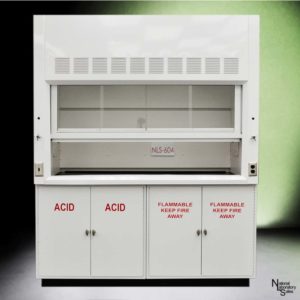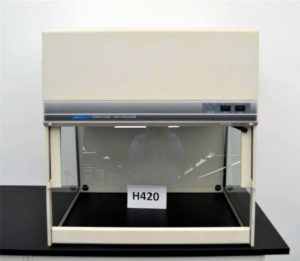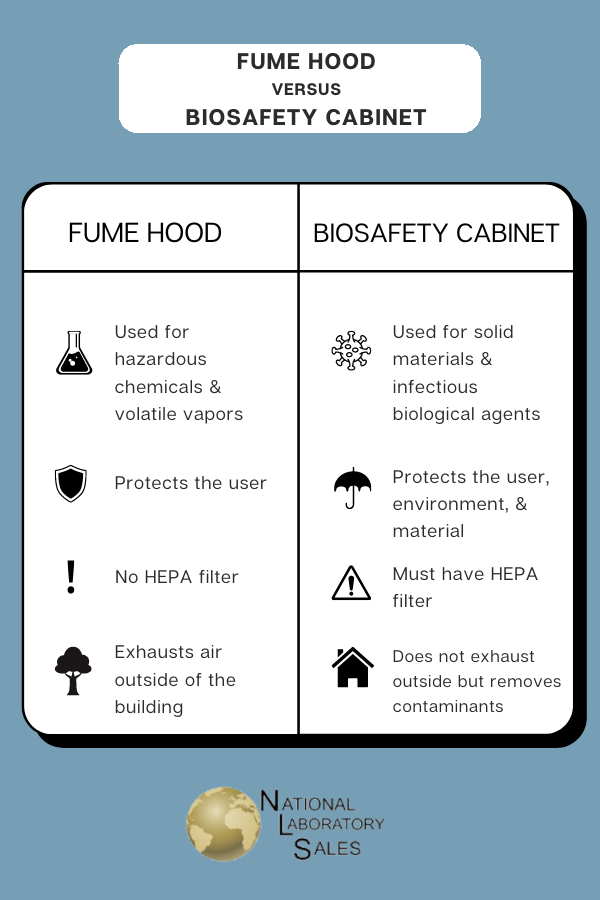When it comes to laboratory safety, knowing whether to use a fume hood or a biosafety cabinet is crucial. These pieces of equipment may seem similar at a glance, but they serve distinct purposes and are suited for different types of work. This post delves into the specifics of each, helping you understand which is right for your needs.

Fume Hoods Control Gases
Fume hoods protect users from hazardous chemicals and volatile vapors by moving air away from the work area. The ventilated enclosures draw air away from the laboratory worker at the face of the equipment. This evacuation of air continues across the work surface and through the ductwork where the contaminated air is released into the atmosphere.
Biosafety Cabinets Control Particles
Biosafety cabinets take solid materials out of the airstream by protecting the user, the environment, and the material. One major difference from a chemical fume hood is that biosafety cabinets have high-efficiency particulate air (HEPA) filters. These filters will trap all known infectious agents and ensure that only microbe-free exhaust air is discharged back into the laboratory. These filters, however, do not remove gas vapors from the air that is  filtered. Biosafety cabinets actually disperse gases back into the laboratory.
filtered. Biosafety cabinets actually disperse gases back into the laboratory.
Related: Can a Fume Hood be Used as a BioSafety Cabinet?
In summary, fume hoods take air and contaminants away from the user. In doing so they dilute the air to control gases. Biosafety cabinets, on the other hand, clean particles out of the laboratory air and remove airborne contaminants inside of the hood.
National Laboratory Sales has the right fume hood or biosafety cabinet for your laboratory. Along with a full line of new and used laboratory casework, we are a one-stop experience for high-quality products and provide quick shipment on everything we sell. Contact National Laboratory Sales today!


